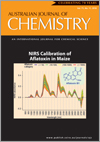
Australian Journal of Chemistry
Volume 71 Number 11 2018
CH18213Effect of Alternation of Chloropropoxy and Propoxy Units and Impact of the Ethylol-Group Number on Properties of Surfactants
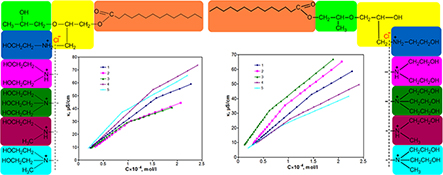
Non-ionic surfactants were synthesised based on myristic acid, epichlorohydrin, and propylene oxide. By interaction with ethanolamines, non-ionics were transformed into cationics. A structure–surface activity relationship was established. A very high petrocollecting capacity of the cationics was revealed.
CH18228Selective Adsorption and Separation of Organic Dyes by Poly(acrylic acid) Hydrogels Formed with Spherical Polymer Brushes and Chitosan
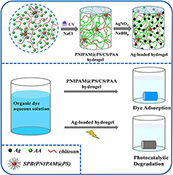
The selective adsorption and separation or photocatalytic degradation of organic dyes with PAA hydrogels comprising polymer brushes and chitosan as crosslinker is demonstrated.
CH18126End-Blocked Silanization of Side-Chain Fluoroalkyl Oligoether and its Surface Properties
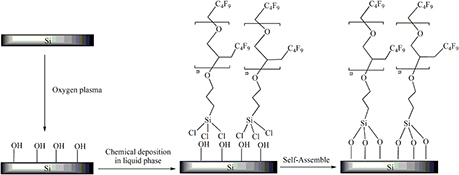
End-blocked silanized side-chain fluoroalkyl polyethers with controllable molecular weight were synthesised. Self-assembled monolayers of the silanlized fluoropolyethers on silicon substrates were fabricated using the liquid phase deposition method. The migration of fluoroalkyl groups upon heating generated a porous surface, which improved the hydrophobicity.
CH18304A ZnII-MOF Assembled by Triazine-Based Polycarboxylate and 4,4′-Bipy: Structure, Fluorescent Properties, and Water Vapour Adsorption
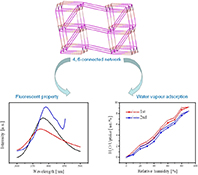
A new ZnII-MOF was obtained with a 4,6-connected network topology structure and exhibited obvious fluorescence enhancement, nanosecond lifetime, large quantum yield, and moderate water vapour adsorption property.
CH18316NIRS Calibration of Aflatoxin in Maize
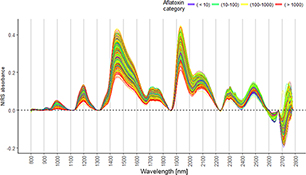
We use NIRS scans of ground maize samples to estimate their aflatoxin level. Absorbance tends to be low for samples with extremely high levels of aflatoxin. Our study examines the performance of NIRS using a large heterogeneous collection of maize samples collected at several sites in Kenya and Tanzania. We compare machine learning techniques with the more traditional chemometric approaches.
CH18260Activation of Peroxymonosulfate by CuNi@C Derived from Metal–Organic Frameworks Precursor
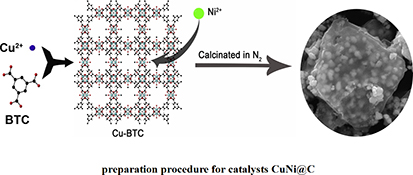
Metal–organic frameworks have been increasingly proposed as heterogeneous catalysts for advanced oxidation processes. CuNi-MOFs were synthesised for the activation of peroxymonosulfate to degrade Acid Orange 7 and showed good catalytic activity and non-negligible adsorption. Findings revealed that the CuNi-MOFs/PMS system shows potential for degrading contaminants in the environment.
CH18370Facile Preparation of Highly Luminescent Nitrogen-Doped Carbonaceous Nanospheres and Potential Application in Intracellular Imaging of Quercetin
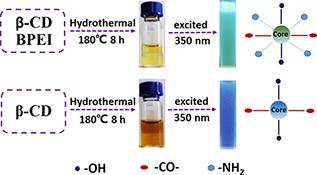
Highly luminescent nitrogen-doped carbonaceous nanospheres (LNCNs) were prepared by hydrothermal treatment of β-cyclodextrin (β-CD) and branched polyethylenimine (BPEI) by a one-pot method. As a comparison, β-CD was used as a raw material to synthesize carbon dots in the absence of BPEI. The carbon dots directly synthesized from β-CD exhibited weak blue fluorescence, while the LNCNs displayed a green image under a 365 nm UV lamp.
CH18308A Fluorescent Chemosensor for Zn2+ Based on a C3-Symmetrical and Pre-Organized 2,2′,2″-Nitrilotribenzoic Acid Material

A C3-symmetrical 2,2′,2″-nitrilotribenzoic acid derivative as a fluorescent sensor for zinc ions has been developed.
CH18274Two Metal–Organic Coordination Polymers Based on Polypyridyl Ligands: Crystal Structures and Inhibition of Human Spinal Tumour Cells
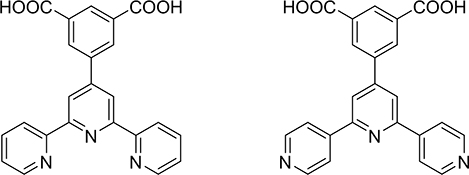
Two new metal–organic coordination polymers have been obtained based on two similar carboxylic-pyridinyl ligands, and their anticancer activities have been evaluated via the MTT assay.
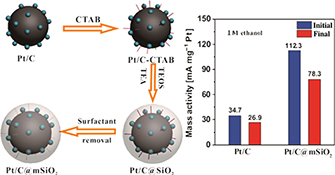
An ultrathin silica layer was directly coated onto Pt/C without introducing an intermediate layer. The ultrathin silica-protected Pt/C exhibits significantly enhanced durability without sacrificing its activity in the methanol oxidation reaction.
CH18290The Mixed Magnetic Property of Co0.76Cu0.74[Fe(CN)6]·7.5H2O
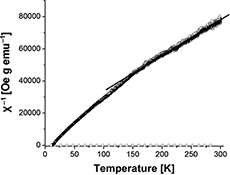
The temperature dependence of the χ−1 curve obeys the Curie–Weiss law (χ = C/(T – θ)) in the temperature range of 180–300 K. The curve over the temperature range 20–180 K is arc-shaped, which is a large deviation from the Curie–Weiss law. Below 180 K the curve deviates from linearity due either to exchange interactions between transition metal magnetic moments or to spin-orbit coupling.




